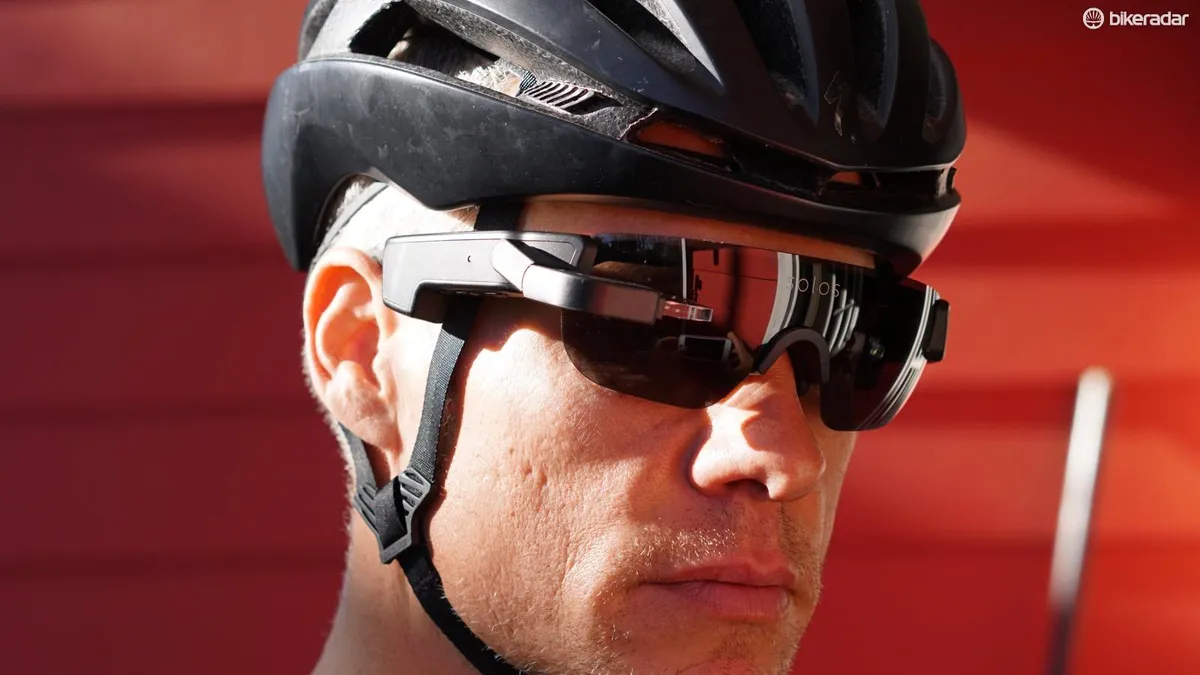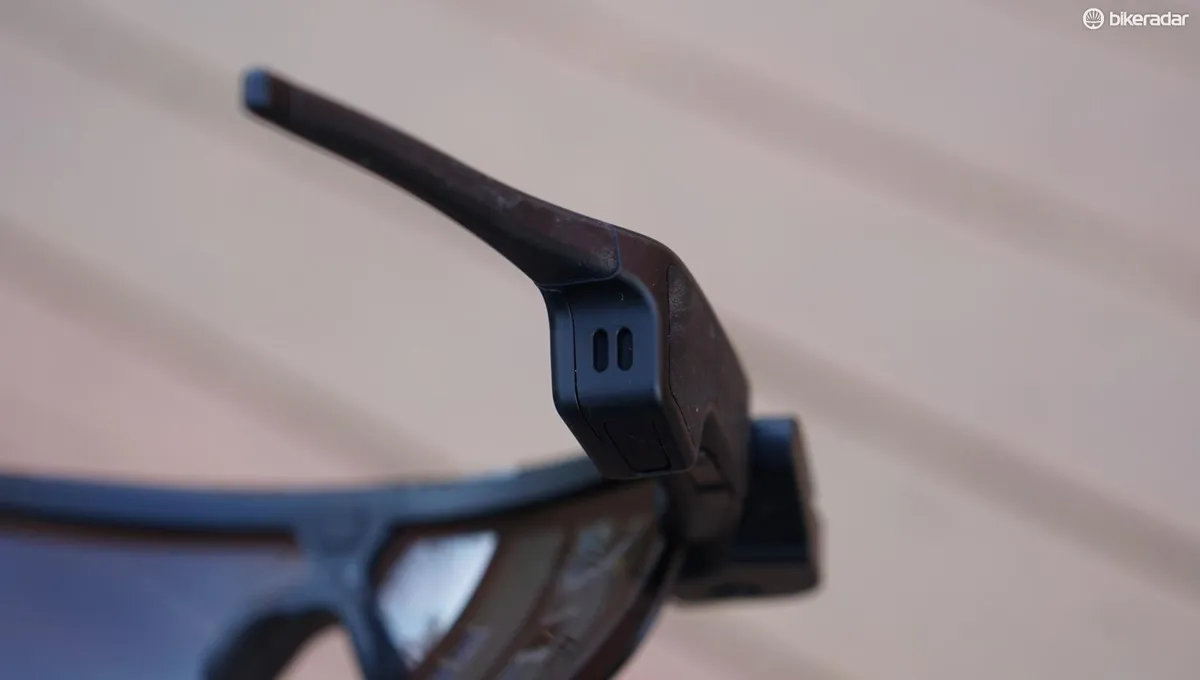The latest entrant to the heads-up display game, the Solos Smart Glasses, puts one or two fields of data in front of your right eye, connects to your sensors (and phone) via an app, and can play music from your phone on mini speakers behind your ears. I took the Solos for a spin, and here are my initial thoughts.
Dorkatron 2000 aesthetic, but let’s talk functionality first
Yes, like Recon Jet glasses, the strap-on Garmin Varia Vision or Everysight Raptor, these things look silly. But since you can already see how they look from the outside, I’ll focus on how they look and perform from the inside.
To get the little screen in view, you can adjust the arm in three dimensions. I couldn’t tilt it far enough up to see it with glasses pushed all the way up, so I had to slide it down my nose a tiny bit to see.
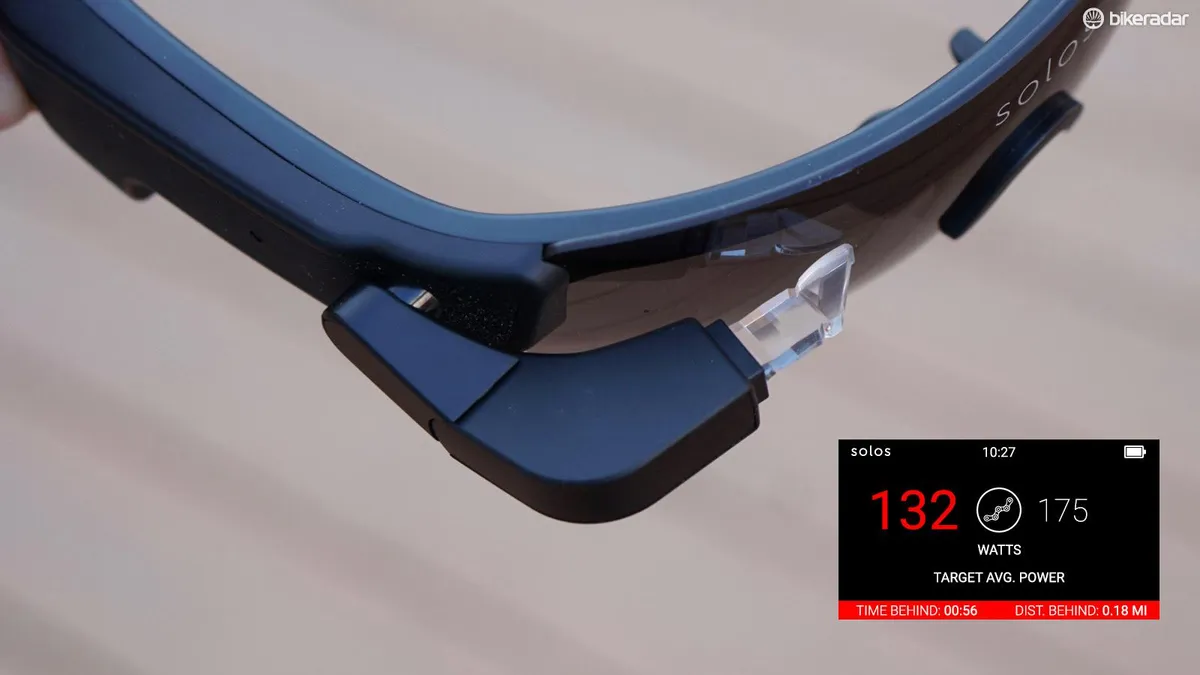
The screen is crisp when you have the position dialed, but the smallest movement of the glasses or your face and the screen disappears from view. For example, when I smiled or grimaced, my nose moved slightly and the screen vanished. Or, when doing a longer climb, the glasses slid down my noses ever so slightly, and again, the screen disappeared. Same deal for big bumps in the road.
The screen is set just to the right of the centerline of your vision. With the arm pivoted up, it’s good for looking up the road in an aggressive position and seeing the data.
The problem is the thick frame sits relatively low across the brow, so look up and you'll see a big, black bar well underneath your helmet. Speaking of black bars, the arm extends into your field of view. While the clear arm that holds the screen largely disappears, the main black arm is inescapable. It’s not as if you lose all peripheral vision to the right side, but still, if the point of a heads-up display is safety and increased awareness, having part of your vision blocked is counterproductive.
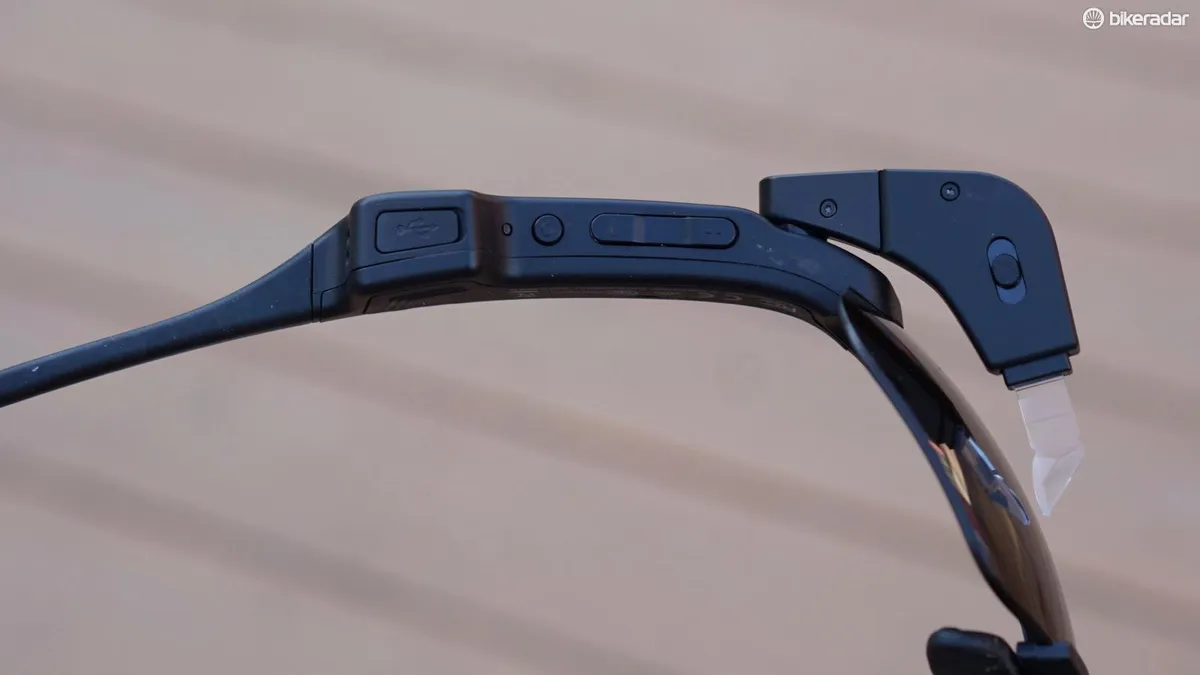
Like the other heads-up displays, you move your eyes slightly and refocus to see the data. It's not too dissimilar from holding your phone in front of your face while riding — you can only focus on one thing at once. Is this safer than glancing down at your handlebars? I'm not convinced.
So what's on that screen, anyway?
There are a number of potential fields you can see — elevation, time, heart rate, power, distance, etc, plus targets for each. You pick these from the app. And then the selected metrics scroll through (you can’t advance or back up, as the scroll is automatic).
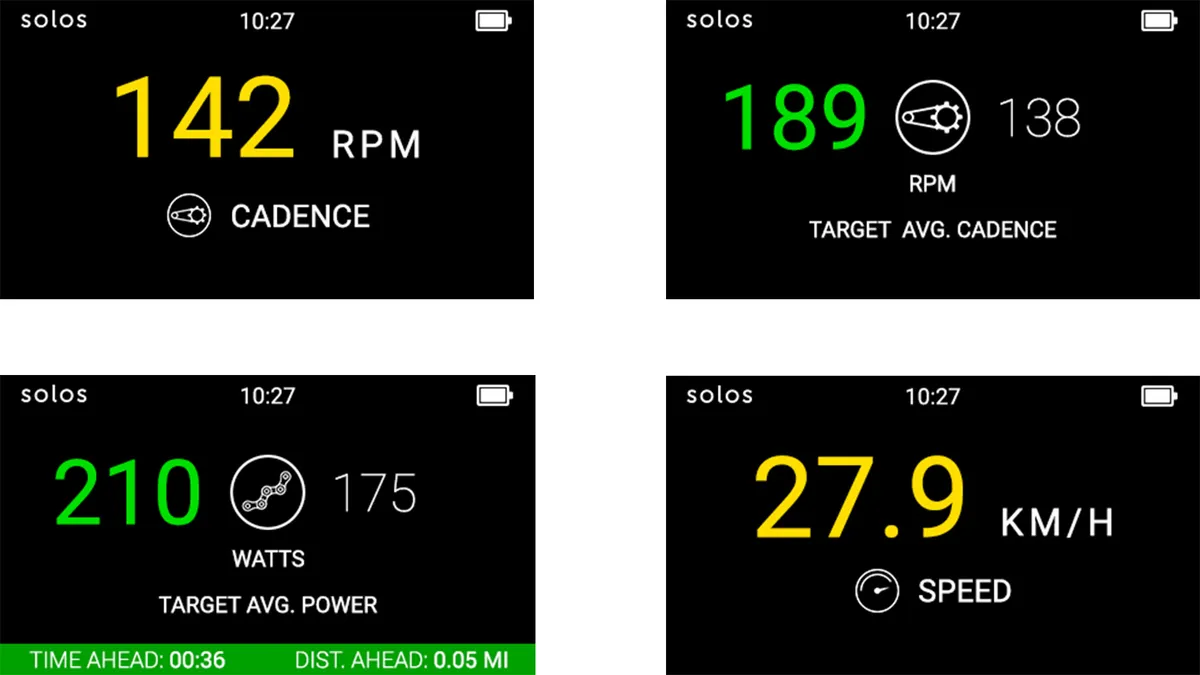
In my mind, though, there is no point in having any of this data in your line of vision for real-time tracking except power and maybe heart rate. When doing intervals or pacing yourself in a time trial, it could be beneficial to have that number right up front.
But there is no 3sec power field, which is really the standard for pacing efforts, only 1sec.
That voice, or song, around your head
You can set the app to get you audio feedback on your chosen target fields. I found this kind of annoying.
You can also play music from your phone on the speakers, which sit behind your ears and let you hear ambient noise as well. I found the music to be the most enjoyable part of the whole experience. It's been years since I’ve ridden with music, so it was fun to have Talib Kweli, Nick Cave and others in my ears while climbing.

Although, like the metrics in front of your eyes, the music can’t be controlled by the glasses. You have to pull your phone out of your jersey pocket to advance songs.
At 67g, the Smart Glasses are about twice the weight of a normal pair of sunglasses. For reference, my trusty Oakley Jawbreakers weigh 34g and a pair of Rapha Pro Team Flyweights weigh 25g.
Battery life is a claimed five hours, and that is just about what I got (for total time, not ride time) before the little voice said goodbye and the thing shut off.
Bottom line: I’m still skeptical
When everything is set up and working smoothly, it can be cool to have information in your line of sight. You just refocus your eyes for the information, and disregard it otherwise.
But for me, the juice just ain’t worth the squeeze. Compared to a normal pair of sunglasses and an out-front-mounted computer, there are a number of downsides: weight on your face, added complexity, limited battery life, required use of an app (and your phone’s battery), and the fussy and exacting angle requirement to be able to see the screen.
Plus, there is no getting around the fact that the things just look goofy as hell.
